CAES hosted a virtual roundtable on Monday, April 19 featuring a presentation by Jess Gehin, associate laboratory director for INL’s Nuclear Science and Technology Directorate followed by lightning presentations by 12 faculty members from the CAES universities.
The slides are available here.
Here is some information about the presenters:
Jim Browning, Electrical and Computer Engineering, Boise State University
Vacuum Electronics and Sensors for Harsh Environments
Nano-Vacuum transistors are being developed using semiconductor fabrication processes. Because transport is in vacuum, these devices can operate >400?C and in high-radiation environments. Digital and analog circuits are being developed and could also operate as RF oscillators for communication, amplifiers, and sensors.
Brian Jaques, Micron School of Materials Science and Engineering, Boise State University
Nuclear Energy Research in the Advanced Materials Laboratory at Boise State University
Lan Li, Micron School of Materials Science and Engineering, Boise State University
Computational Modeling of Nuclear-Related Materials and Devices
Dr. Lan Li’s Materials Theory and Modeling Group combines multiscale modeling and machine learning techniques to accelerate the development of nuclear-related materials and devices in collaboration with experimental teams at BSU and INL. This presentation will feature her projects on high-temperature irradiation resistant thermocouples, advanced manufacturing, UN fuel corrosion behavior, carbon interfaces, structures and impacts on reactivity. Integrating machine learning into materials research will also be discussed.
Hui (Claire) Xiong, Micron School of Materials Science and Engineering, Boise State University
Understanding the Responses to Radiation in Structural Materials for Extreme Environments
Xiong’s research focuses on understanding radiation-induced effects on materials properties of ceramics, with particular interest in the defect formation, migration and annihilation of structural materials under radiation and how we could utilize radiation to aid novel materials synthesis for advanced functional materials.
Amir Ali, Nuclear Engineering, Idaho State University
Innovative Heat Exchanger (HX) Technology for Nuclear Applications
Chad L. Pope, Nuclear Engineering, Idaho State University
Nuclear Power Flooding Risk and Generation Risk Analysis
A brief discussion of Idaho State University nuclear engineering activities funded by the Light Water Reactor Sustainability program. The discussion will address component flooding experiments, fragility model development, and smoothed particle hydrodynamic simulation. Additionally, the discussion will address development of the Versatile Economic Risk Tool (VERT) which support nuclear power generation risk assessment by coupling SAPHIRE and RAVEN.
Mustafa Mashal, Department of Civil and Environmental Engineering, Idaho State University
Potential Applications of New Technologies from Civil Engineering in the Nuclear Industry
As part of the Industry 4.0 initiative, the world of civil engineering offers several technologies that could potentially benefit the nuclear energy industry. Technologies such as Ultra-High-Performance Concrete (UHPC); Structural Health Monitoring (SHM); and Augmented/Virtual Reality (AR/VR) have been successfully implemented in civil infrastructure and should be explored for siting of the next generation of reactors and associated operations.
Jason W. Barnes, Department of Physics, University of Idaho
Dragonfly: NASA’s Nuclear-Powered Titan Rotorcraft Lander
Now that the rover Perseverance had touched down on Mars, the next Radioisotope Thermoelectric Generator (RTG) to launch into space on a NASA mission will be Dragonfly. Dragonfly is a ~500kg lander for Saturn’s moon Titan with a mission to determine the complexity of prebiotic organic chemistry on the surface, evaluate potential astrobiological habitability, and search for chemical biosignatures. INL fabricates and fuels the RTG, due to be launched in 2027 and to arrive at Titan in the late 2030s. Barnes is the project’s deputy PI.
Indrajit Charit, Department of Nuclear Engineering and Industrial Management, University of Idaho
Nuclear Materials Research at UI-NEIM
John Crepeau, College of Engineering, University of Idaho
Solid-liquid phase change with internal heat generation
Crepeau’s group has developed closed-form solutions to the solid-liquid phase change problem driven by internal heat generation in cylindrical geometries. This problem relates to the melting of nuclear fuel rods during accident conditions. The group would like to develop a set of experiments to study this melting phenomenon to test the validity of our models and better understand what occurs in a nuclear fuel rod during meltdown scenarios.
Matthew Swenson, Department of Mechanical Engineering, University of Idaho
Laser welding and irradiation effects on nanocluster and microstructure evolution in advanced alloys
Vivek Utgikar, PhD PE, Department of Chemical and Biological Engineering, University of Idaho
Integrated Energy Systems and Fuel cycle Research at University of Idaho, Moscow
An overview of the research activities of Utgikar research group focused on integrated energy systems and fuel cycle will be presented, and the capabilities and the current DOE-NEUP projects described. Information will also be presented on other past projects, including NRC-sponsored Faculty Development Grant.





